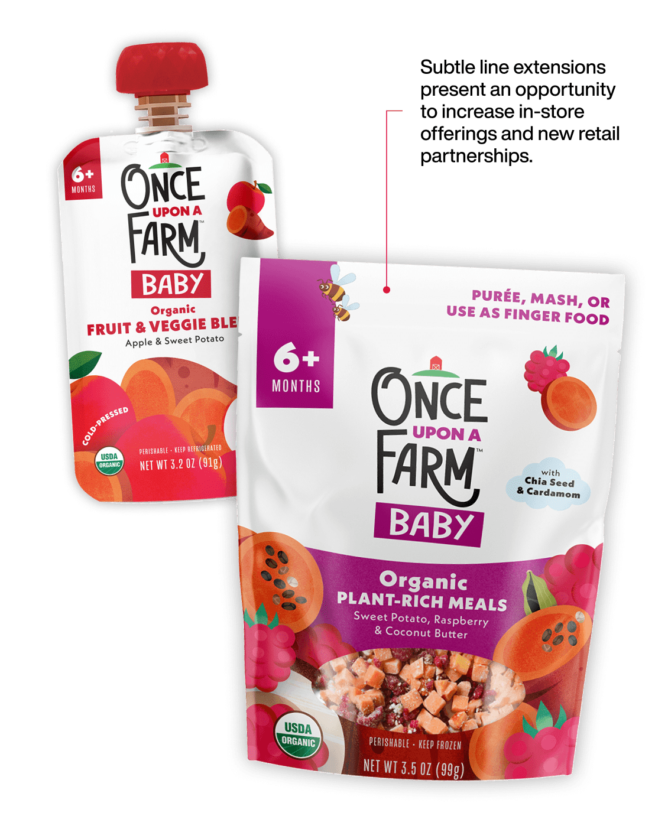But despite these attractive benefits, innovating a brand extension is far from a no-brainer. Getting it wrong brings costly risks, including the possibility of harming your hero and legacy products’ performance.
To get it right, carefully examine your potential extension through four strategic, interconnected lenses.
Lens 1: Your consumer.
You and fellow brand leaders are not your customers. So it’s not enough to have an idea you’re excited about. Instead, you must understand at a deep level who you want to reach and what specific needs they have.
In other words, consumer insights should be the basis for any decision you make about extending your brand. To get to the heart of this, ask questions like:
- Who exactly are we targeting? Trendsetters? Health-conscious consumers? Parents? Other distinct audience segments?
- Why will members of this segment want this product?
- What specific value proposition are we providing?
- How is the competition reaching this consumer segment — and where are they missing the mark?
The most strategic approach is to identify an emerging consumer group with a long-term need that larger brands aren’t currently serving. By winning with a specific segment first, you create a foundation for broader growth.
Lens 2: Your category.
Every CPG brand category has primary purchase drivers that influence purchase intent. These could be taste, functionality, health benefits, convenience, price, or something else. Your brand extension must not only satisfy these purchase drivers, but also offer a compelling point of differentiation. The last thing any category needs is another “me too” product.
So how can you ensure your new product wins in its category? Make sure you have good answers to the following:
- What are the purchase drivers in this category and do they match where we are strong? (For example, if a primary purchase driver in your new category is taste and your product doesn’t deliver, you automatically lose.)
- Is there stiff competition? Or is there room for us to make our own mark?
- What makes our offering unique?
- What will entice consumers to switch from existing products to this one?
- How could we expand or build on the category’s existing appeal?
Jamba Juice fruit snacks are an excellent example of a brand that entered a new category with a winning proposition. They knew fruit snacks generally appeal to young consumers and their parents. But as kids age, the appeal diminishes.
By leveraging their well-known name, their QSR “cool-factor,” and the popularity of their smoothies with teens and adults in particular, Jamba Juice aged up the category and captured new market share.
Lens 3: Your brand equity
Brand equity is the critical foundation that gives your extension credibility. Put simply, if you don’t have brand equity or strength on which to build, you’re not extending your brand at all. You’re just launching a new product.
To make sure you truly have brand equity to leverage, take an honest assessment:
- What are we known for and what gives us credibility?
- What do our consumers think and how do they feel about our products?
- Are we strong enough in our current category to expand?
- Do we have a unique strength that translates seamlessly to a new product or category?
- Can our brand’s perceived values translate meaningfully to the new offering?
- If our own brand equity is weak, could we borrow another brand’s equity through licensing?
If your core offering isn’t in good shape and/or you don’t have brand equity to leverage, trying to move into new platforms or categories could put your existing product line at risk.
Two success stories and one cautionary tale.
Ghost Beverages masterfully used brand equity — in part by licensing third-party brand equity — to aggressively and rapidly expand their product lines. By focusing on taste and licensing flavors from well-known brands like Sour Patch Kids and Swedish Fish, they successfully moved beyond their core energy drink flavors to extend their line.
By contrast, Annie’s Organic is a valuable lesson in restraint. Excited about the success of their organic mac and cheese product, Annie’s quickly released products in multiple kid-focused categories — crackers, dairy, fruit juice, and more. Most of them failed, and they eventually decided to pull back and focus on re-building their core offering.
Once Upon a Farm took a balanced approach by carefully building a sustainable growth model. First, they focused on protecting and strengthening their core offering — refrigerated baby food pouches. When that product was well-known and successful, they extended slowly and strategically into adjacent categories like refrigerated bars and frozen meals.
Lens 4: Your retailers.
The way your product shows up in a retail store can make or break your brand extension. Some retailers like GNC use a brand blocking strategy that groups all branded products together regardless of category. But grocery stores operate much differently. Your branded products may be grouped with similar items — or they may live in completely different aisles and sections of the store.
Take body wash as an example. It’s almost always next to bar soap, shampoo, and conditioner. Which means if you’re a bar soap brand that’s expanding into body wash, common retail shelf placement will do most of the work of brand extension for you.
But if your legacy product is protein powder and you want to launch an energy bar? That’s a completely different story. This category has a complex retail landscape. That bar could be placed with granola bars in the cereal aisle or in pharmacy with weight management products or in the health food aisle — it’s totally up to the retailer.
How can you overcome these challenges? Conduct a retail audit to discover where your extended item is likely to be placed and whether or not it will be possible to maintain brand blocking and visibility.
It’s also important to consider how each category rolls up in terms of the department hierarchy of the retailer. It’s always easier and best if you can stay within one buyer group (e.g., fresh meats vs. frozen) since there is often competition among managers in each department.
You may find it’s advantageous to extend first into the categories which are shelved right next to your core category — and therefore within the same buyer group — in the most number of stores.
Envision your brand extension with solid strategy in mind.
Successful brand extensions aren’t built on a single brilliant idea for a new CPG product. They’re carefully crafted based on a holistic, integrated extension strategy that takes consumer needs, category dynamics, existing brand equity, and retail realities into consideration.
By innovating your next brand extension with these factors in mind, you’ll create new products that resonate with consumers, deliver genuine value, and strengthen your bottom line.
SmashBrand’s data-driven approach to CPG brand strategy takes the guesswork out of the process to create brand extensions that deliver measurable ROI. Guaranteed. So when you’re ready to get started, let’s talk.
Subscribe to
Nice Package.
A monthly newsletter that unpacks a critical topic in the FMCG & CPG industry.
Free Resource.

CPG product repositioning guide.
Explore the five undeniable signs your CPG product needs repositioning along with strategies for leveraging consumer insights for a guaranteed market lift.
Learn More About CPG product repositioning guide.
